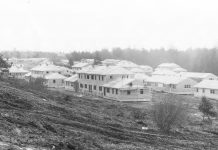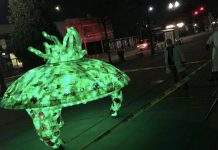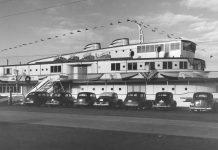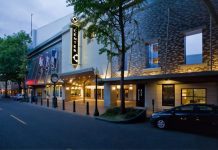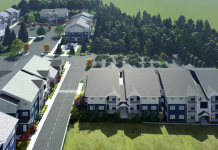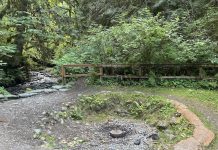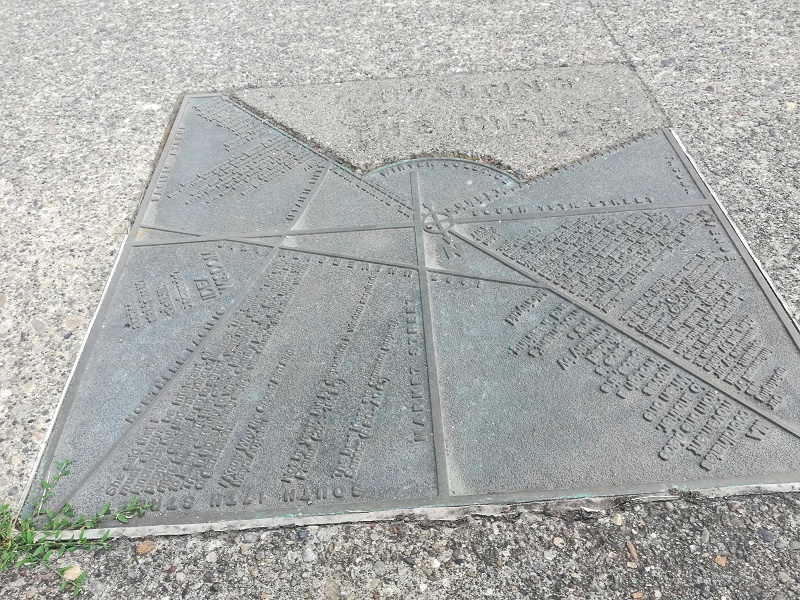Anyone who has walked around Tacoma for any bit of time has noticed that the City of Destiny has its fair share of monuments, plaques, artistic eye catchers and historical markers. They dot the city. Some of them are straight forward – house was built by, owned by or once the site of someone or something notable. Others are much less linear, and make themselves more fascinating with new tales being told with each visit. These are some of those stories.
Arguably the top “cool stories behind gems that are hidden in plain sight” is the “Solstice marker” on the east sidewalk of S 19th Street, just a few yards up from Market Street. The bronze stepping stone has a bit of everything. There are quotes from poet Maya Angelou and the philosopher Seneca. There’s a map of the neighborhood and a mention of the former Japanese Language school that once anchored that area of Tacoma. Oh yeah, there is also a mention of being able to see into the world beyond the living if you visit the site on the Winter Solstice.
Walkers turned conspiracy buffs could spend a whole day just trying to unpack all the references and meanings in this meter-wide gem. The trick to finding its meaning is to know that it is part of a collection of works. Each of the elements add up to the overall installation called Parapet Relay by Buster Simpson that came to life 22 years ago, when University of Washington Tacoma rose from the city’s warehouse district. Don’t ruin a good mystery by reading about it before you visit, however, just figure it out and enjoy the experience.
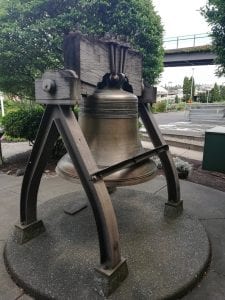
Thousands of Tacomans drive through downtown with no knowledge that they are just yards away from an exact replica of the Liberty Bell. Yep, Tacoma has one of the 55 replicas that were cast in France to the same specifications – minus its famous crack – as the national treasure in Philadelphia. Tacoma’s bell was part of the 1950 bond drive and toured the state during the bond effort. It was gifted from the U.S. Treasury to the state after the drive was over and then included in the restoration and reuse of Union Station into the Federal Courthouse. The bell sits in a quiet nook in the back parking lot at 1717 Pacific Avenue silently standing as a symbol “dedicated to you, a free citizen in a free land,” according to the marker.
One key function of most monuments is to mark and record what was once there or why the marker exists. One such marker is a bit of a twofer and sits at the corner of Tacoma Avenue and S 8th Street. The etched bolder secured behind a viewing fence marks the site of the first high school in the Tacoma Public School District. The site is now the district’s Central Administrative Office, but dates back to the earliest days of the pioneering city. The first building at the high-traffic corner was the location was first home to the short-lived Washington College for Boys. It ran from 1885 until 1896, when the building became Tacoma’s first high school that same year. It would only serve that role for 10 years since what is now Stadium High School opened in 1906. Most of the current building was built in 1921 to serve as the Central School for younger students before the district grew and needed a central office for administrative offices and students could gain knowledge closer to their neighborhoods.
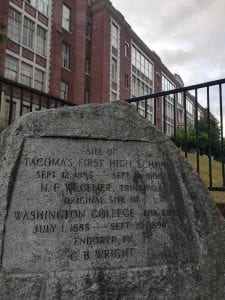
Another two-in-one monument is a stone pyramid in front of Fern Hill Elementary School at South 84th Street and Park Avenue. It’s actually a threefer since it marks the location of a section of Old Military Road that ran from Bellingham to Steilacoom in 1857, the first telegraph line in 1864 and the first school in the neighborhood in 1880. These sorts of pyramid monuments can be found around Pierce County since several stretches of the Old Military Road system all converged locally as they headed to Fort Steilacoom, the first military post in the territory. Some of the sections of road are still used today.
On the flip side of the one-monument, two-commemorations idea is the many monuments around the city that mark a single event. There’s a cannon in Wright Park, a shell from the USS Maine at Point Defiance Park, and the Spanish Steps between Broadway and Commerce Street that all mark the Spanish-American War of 1898. It was a war that only lasted a few months and came at a cost of less than 400 American lives, but the United States would gain a taste of being on the world stage that would then lead it a hunger for world power after World War I a generation later.
The story behind one monument causes even the grumpiest of grumps to take pause. The “We Honor a Hero” statues in front of Lowell Elementary School. The gripping monument by Larry Anderson honors 11-year-old Marvin Klegman. He died while saving the life of fellow student Kelcy Allen during a 7.1-magnitude earthquake that hit in 1949. Klegman was the only local fatality that day. The statue was dedicated in 2003, only after the area’s most recent earthquake re-sparked interest in the 1949 quake.
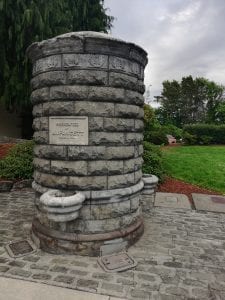
Not all monuments mark outright heroes, since sometimes the lines between hero and villain are blurred. Such is the case of Fawcett’s Fountain, also known as Fawcett’s faucet at Firemen’s Park on Pacific Avenue and S 7th Street. The fountain had once stood at the junction of Broadway, St. Helens and 9th Street and is a copy of a fountain in Long Beach, California. Former Mayor Angelo V. Fawcett presented water fountain to the make sure that anyone walking along the bustling streets of Tacoma get a drink of water. It was moved in 1940s to Firemen’s Park. It is still in working condition, a long-standing gift from one of the city’s most controversial mayors. He was a man who got streets and schools named after him for Tacoma’s water supply, the construction of the 11th Street Bridge and the formation of what is now Joint Base Lewis-McChord. But he was also a man who enjoyed the benefits of backroom deals that came with local politics in those days.
One of the most-talked-about markers in Tacoma is the plaque on the Bostwick building at Tacoma’s Five Corners. The talks about how Gen. Rossell O’Brien was the first to call for people to stand during the playing of “The Star-Spangled Banner” at a meeting of Union Civil War veterans on October 18, 1893. While the date and actions were true, the practice of standing was already wide spread by the time he called for the members to rise. Most historians credit Daniel Webster for kick starting the practice back in 1851. But it is a good story to tell, and frankly, O’Brien should be honored for his life’s work anyway, namely serving in the Civil War and then as a territorial lawmaker as well as being the “father of the Washington National Guard” after he formed the Capitol Guards and shepherded the guard through its early years. It should also be noted that the “Star-Spangled Banner” didn’t become the national anthem until 1931.
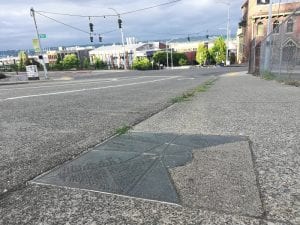
The reason the plaque crediting O’Brien for something he did that wasn’t actually historic is an interesting one, one almost as interesting as the plaque itself. The bronze plate was installed in 1970 by the local chapter of the Daughters of the American Revolution, not the veterans’ group that actually held that meeting 90 years prior. The DAR was gearing up for the nation’s bicentennial six years later as well as boost patriotism as the war in Vietnam raged. Those “modern facts” make the plaque’s story more interesting than the events the plaque commemorates.
Tacoma specifically, and Pierce County in general, has many more markers to discover. What you will find is, often times, the story behind them is more interesting than the marker itself.





